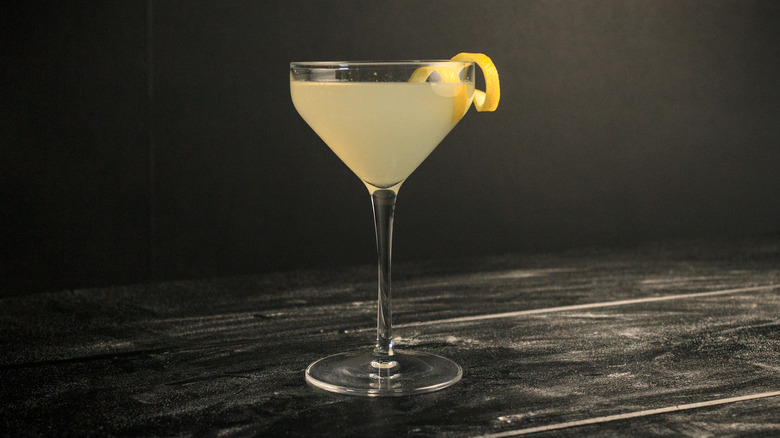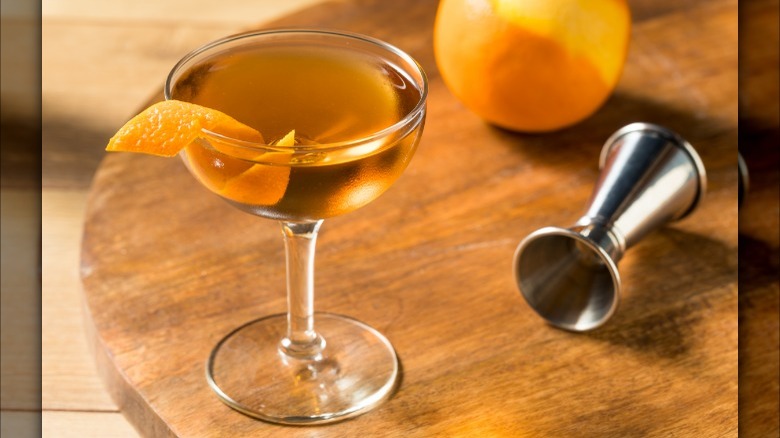The 2 Versions Of The Corpse Reviver Cocktail, Explained
If you've ever crawled your way toward a "hair of the dog," this one's for you. Punctuating a joyous, raucous night with a splitting headache is tradition, not just on a personal level. Historically, folks have been walking this walk for centuries, and doing it so commonly that they even invented a cure-all drink for it. Introducing: the Corpse Reviver cocktail.
Corpse Reviver cocktails emerged as a popular bar trend during the mid-1800s pre-Prohibition. The drink gets its playful tongue-in-cheek name as being a strong libation to put some pep into the step of violently hungover barflies the morning after. One of the earliest (if not the first) mentions of a Corpse Reviver in print comes from a December 21, 1861 issue of the English publication "Punch, or the London Charivari." It was written of one partaker that "after liquoring up with a Sling, a Stone Wall, and a Corpse-Reviver, he merrily danced forth into the middle of the room and sang a pleasant little song."
In his 1930 magnum opus "The Savoy Cocktail Book" (which has emerged as the unofficial industry Bible), famed English bartender Harry Craddock prescribes the Corpse Reviver cocktail "to be taken before 11 a.m., or whenever steam and energy are needed." But, as all service industry professionals know, the customer is always right –- and there are two different versions of the cocktail that wandering barflies can order.
Dark or bright, but strong either way
Unlike other fantastical cocktail names like the Shiso Vain or the Marzipan's Labyrinth, the two versions of Corpse Revivers are differentiated by a decidedly simple designation: "No. 1" and "No. 2." They're fitting titles for cocktails inspired by a utility.
The Corpse Reviver No. 1 combines cognac, vermouth, standard grape brandy, and Calvados (French apple brandy). It's a spirit-forward bevy that can range from sweet to dry to floral depending on which vermouth you choose. The Corpse Reviver No. 2 is comparable to a floral, bitter Tom Collins. It combines equal parts gin, lemon juice, Cointreau, and Lillet Blanc, with a dash of absinthe to finish. London dry gin works best here.
If you prefer a dark, moody cocktail that'd blend seamlessly into a wood-paneled library, order the No. 1. Or if bright is more your style, opt for the orange-lemon-anise profile of the No. 2.
As their namesake implies, these cocktails tote a hefty ABV. The only mixer in the No. 2 is a dash of lemon juice — and there's no mixer in the No. 1. Tread lightly to receive maximum "revival" effects. Alternately, some fans have been known to front-load in the morning and try for that revival again later in the evening. As Harry Craddock cautioned in "Savoy," "Four of these taken in swift succession will quickly unrevive the corpse again."

